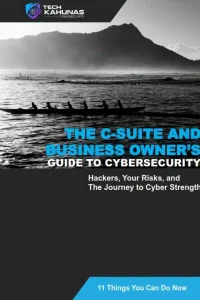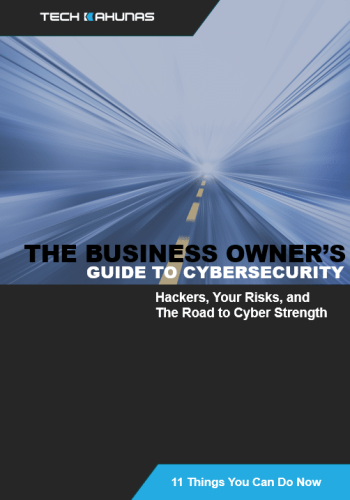In today’s digital age, cybersecurity is a crucial concern for your business. While much focus is placed on external threats like hackers and malware, one of the most significant and often overlooked dangers comes from within the organization: insider threats. Insider threats can manifest through both human error and intentional malicious actions, making it essential for small to medium-sized business (SMB) owners to understand and address these risks effectively.
The Scope of Insider Threats
Insider threats involve risks posed by employees, former employees, contractors, or business partners who have access to an organization’s internal systems, data, and networks. These threats can be divided into two main categories:
- Human Error: Unintentional actions that compromise your security, such as falling for phishing scams, misconfiguring security settings, or accidentally leaking sensitive information.
- Intentional Actions: Deliberate malicious activities, including data theft, sabotage, or fraud, carried out by individuals with malicious intent.
The Statistics
Understanding the prevalence and impact of insider threats is crucial. According to a 2023 report by the Ponemon Institute, insider threats account for approximately 34% of all data breaches. Of these breaches, around 61% were attributed to negligence or human error, while 39% were due to malicious intent. These figures highlight the dual nature of insider threats and the need for comprehensive strategies to mitigate both accidental and deliberate risks.
Human Error: A Persistent Risk
Human error remains one of the most common causes of cybersecurity incidents. Employees, often unintentionally, can become the weakest link in your organization’s security chain. Here are some common scenarios where human error can lead to significant security breaches:
Phishing Attacks
Phishing attacks involve deceptive emails or messages designed to trick individuals into divulging sensitive information such as usernames, passwords, or financial details. Despite increased awareness, phishing remains highly effective. According to a 2022 Verizon Data Breach Investigations Report, phishing was involved in 36% of breaches, demonstrating that even well-informed employees can fall victim to these schemes.
Misconfiguration and Poor Security Practices
Misconfigurations in security settings or the use of weak passwords can create vulnerabilities that cybercriminals can exploit. For instance, failing to implement multi-factor authentication (MFA) or neglecting to update software regularly can open doors to attackers. The same Verizon report noted that misconfiguration errors were responsible for 10% of breaches.
Accidental Data Leaks
Employees might inadvertently share sensitive information through unsecured channels, such as email or cloud services, or misplace physical devices containing critical data. These accidental leaks can have severe consequences, especially for SMBs with limited resources to recover from such incidents.
Intentional Insider Threats: The Malicious Insider
While human error is a significant concern, intentional actions by malicious insiders pose an equally severe threat. These individuals exploit their trusted access to inflict harm on the organization for personal gain, revenge, or other motives. Here are some examples of intentional insider threats:
Data Theft
Employees with access to valuable data may steal information to sell to competitors or use for personal gain. This data could include customer lists, intellectual property, financial records, or proprietary information. A study by IBM Security found that 31% of data breaches involved malicious insiders stealing data for financial gain.
Sabotage
Disgruntled employees may deliberately sabotage systems, delete critical data, or disrupt operations to harm the organization. This type of insider threat can cause significant downtime and financial loss. The same IBM study highlighted that 23% of insider-related incidents involved acts of sabotage.
Fraud
Employees involved in financial or administrative roles may engage in fraudulent activities, such as embezzlement or manipulating records for personal benefit. These actions can lead to financial losses and legal complications for the business.
Safeguarding Against Insider Threats
Given the dual nature of insider threats, SMB owners must adopt a multi-faceted approach to safeguard their organizations. Here are some essential steps to mitigate the risks posed by both human error and malicious insiders:
1. Implement Comprehensive Security Policies
Develop clear and comprehensive security policies that outline acceptable use of company resources, data handling procedures, and consequences for policy violations. Ensure that all your employees are aware of and adhere to these policies.
2. Conduct Regular Training and Awareness Programs
Regularly educate employees about cybersecurity best practices, including recognizing phishing attempts, using strong passwords, and securely handling sensitive information. Continuous training helps reinforce good habits and keep security top of mind.
3. Employ Access Controls and the Principle of Least Privilege
Limit access to sensitive data and systems based on employees’ roles and responsibilities. The principle of least privilege ensures that individuals only have access to the information necessary for their job functions, reducing the risk of data breaches.
4. Utilize Multi-Factor Authentication (MFA)
Implement MFA to add an extra layer of security to critical systems and data. MFA requires users to provide multiple forms of verification, making it more difficult for unauthorized individuals to gain access.
5. Monitor and Audit User Activity
Deploy monitoring tools to track user activity on networks and systems. Regular audits can help detect unusual behavior or unauthorized access attempts, enabling prompt response to potential threats.
6. Establish Incident Response Plans
Develop and regularly update incident response plans to address potential insider threats. Your plans should outline steps for identifying, containing, and mitigating security incidents, as well as procedures for communicating with stakeholders.
7. Foster a Positive Workplace Culture
Promote a positive workplace culture that encourages open communication and addresses employee grievances promptly. Satisfied employees are less likely to engage in malicious activities out of revenge or frustration.
8. Conduct Background Checks
Perform thorough background checks on new hires to identify potential risks. This includes verifying employment history, criminal records, and references. While this may not eliminate all threats, it can help reduce the likelihood of your business hiring individuals with malicious intent.
9. Secure Physical Access
Implement physical security measures to control access to sensitive areas and devices. This includes using keycards, biometric scanners, and surveillance cameras to monitor and restrict entry.
10. Use Data Loss Prevention (DLP) Solutions
Deploy DLP solutions to monitor and protect your sensitive data from unauthorized access or transfer. DLP tools can identify and block attempts to share confidential information outside the organization.
Conclusion
Insider threats, whether due to human error or intentional malicious actions, pose significant risks to your small or medium-sized business. By understanding the nature of these threats and implementing robust security measures, you can protect your organization from potentially devastating breaches. Comprehensive security policies, regular training, access controls, and monitoring tools are essential components of a proactive cybersecurity strategy. Additionally, fostering a positive workplace culture and conducting thorough background checks can further reduce the likelihood of insider threats. By taking these steps, SMBs can safeguard their valuable data and maintain the trust of their customers and partners.



 Get your CPA firm aquainted with new FTC rules.
Get your CPA firm aquainted with new FTC rules. 




